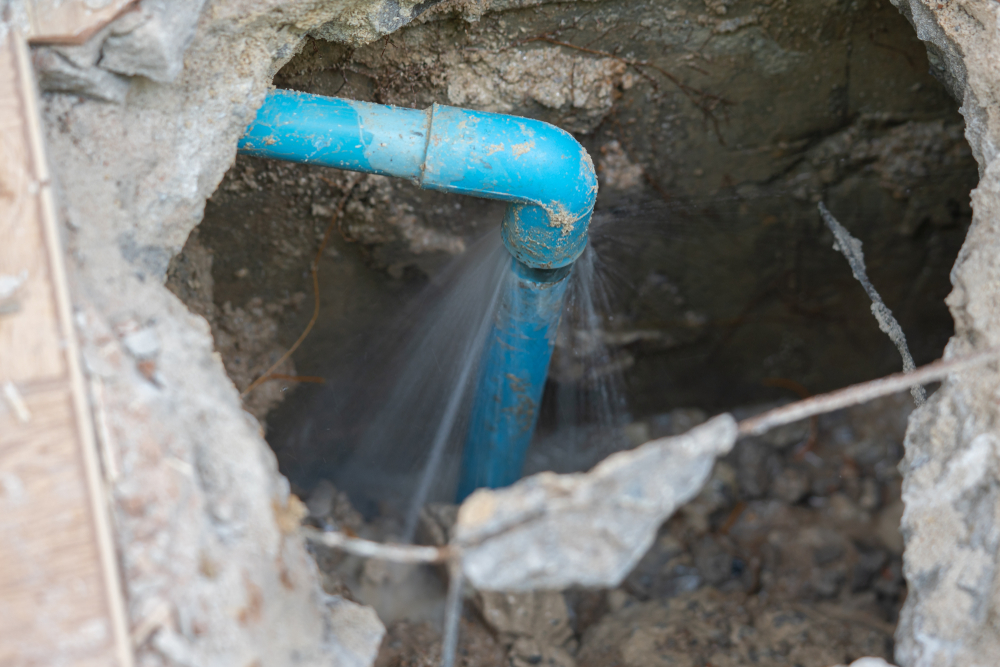Six Effective Techniques for Finding Unseen Water Line Leaks
Six Effective Techniques for Finding Unseen Water Line Leaks
Blog Article
In this article in the next paragraph you'll find more quality details on the subject of Top leak detection hacks.

Early detection of leaking water lines can reduce a prospective calamity. Some little water leakages might not be visible.
1. Analyze the Water Meter
Examining it is a guaranteed method that helps you uncover leakages. If it relocates, that shows a fast-moving leakage. This implies you might have a slow-moving leakage that could also be below ground.
2. Check Water Intake
Assess your water bills and also track your water consumption. As the one paying it, you need to notice if there are any type of disparities. If you identify sudden changes, regardless of your usage being the same, it indicates that you have leakages in your plumbing system. Keep in mind, your water expense must fall under the same variety on a monthly basis. An unexpected spike in your costs suggests a fast-moving leakage.
At the same time, a constant boost monthly, despite having the same behaviors, shows you have a sluggish leakage that's also slowly escalating. Call a plumber to completely inspect your residential property, especially if you feel a warm area on your floor with piping beneath.
3. Do a Food Coloring Test
When it comes to water consumption, 30% comes from bathrooms. If the color in some way infiltrates your bowl during that time without flushing, there's a leakage between the container as well as dish.
4. Asses Exterior Lines
Do not forget to examine your outdoor water lines also. Ought to water permeate out of the connection, you have a loose rubber gasket. One tiny leakage can waste bunches of water and increase your water expense.
5. Evaluate the scenario and check
Property owners need to make it a practice to check under the sink counters as well as also inside cupboards for any type of bad odor or mold and mildew development. These two red flags suggest a leakage so punctual focus is required. Doing routine assessments, also bi-annually, can save you from a major problem.
Inspect for stainings and also deteriorating as many devices as well as pipes have a life expectancy. If you suspect leaking water lines in your plumbing system, don't wait for it to intensify.
Early detection of dripping water lines can minimize a potential calamity. Some little water leaks might not be noticeable. Inspecting it is a guaranteed method that helps you uncover leaks. One tiny leak can lose tons of water as well as increase your water expense.
If you suspect leaking water lines in your plumbing system, don't wait for it to intensify.
How to Know If Your Home Has a Hidden Leak
Water Meter Reveals Inexplicable Water Usage
If you’d like to test whether or not there’s a leak somewhere in your home, you can do this using your water meter. Here is how to conduct the test:
Don’t use any water in your home for at least 30 minutes; this also means not turning on faucets or water-using appliances.
Go outside, and check your water meter for activity.
If your water meter shows that there was activity, even though no one was using any water, this proves that there is a leak in your home.Visible Mold or Mildew Growth
Leaks behind walls create moist, dark environments that allow mold and mildew to grow and thrive. Eventually, you might see mold growth forming on the wall closest to a hidden leak.
If mold is growing in an area that receives a high amount of moisture, such as a bathroom, it may simply be an indication that better ventilation is needed. However, if you see mold growth on a wall or the ceiling in an area where you would not expect, you probably have a hidden leak.
Musty, Mildew Odor
Sometimes you might not be able to see the mold or mildew that is growing as a result of a leak. However, the smell can give the problem away just as easily. If you catch a whiff of something musty, there’s a good chance that old water is collecting somewhere in your home that you can’t see.
Stained/Warped Walls, Ceilings, or Floors
When your home soaks up water, a variety of red flags can become visible, including ceiling stains, bubbling drywall, warped walls, and sagging floors. While these issues can be caused by excess humidity, they can also be signs that a pipe or plumbing connection has started leaking behind your walls.
Inexplicably High Water Bill
After a while, you get a general sense for what your water bill should be. If you own a pool or sprinkler system, your bill will tend to be higher during summer. However, if you receive a water bill that seems especially high, and you can’t figure out what caused it, then you may have a hidden leak somewhere that’s increasing your bill.
https://www.plumbingjoint.com/blog/2019/july/how-to-know-if-your-home-has-a-hidden-leak/

I'm certainly very serious about Top leak detection hacks and I hope you appreciated my article. Do you know about somebody else who is fascinated about the niche? Take a moment to share it. Thank-you for going through it.
Dial instantly! Report this page